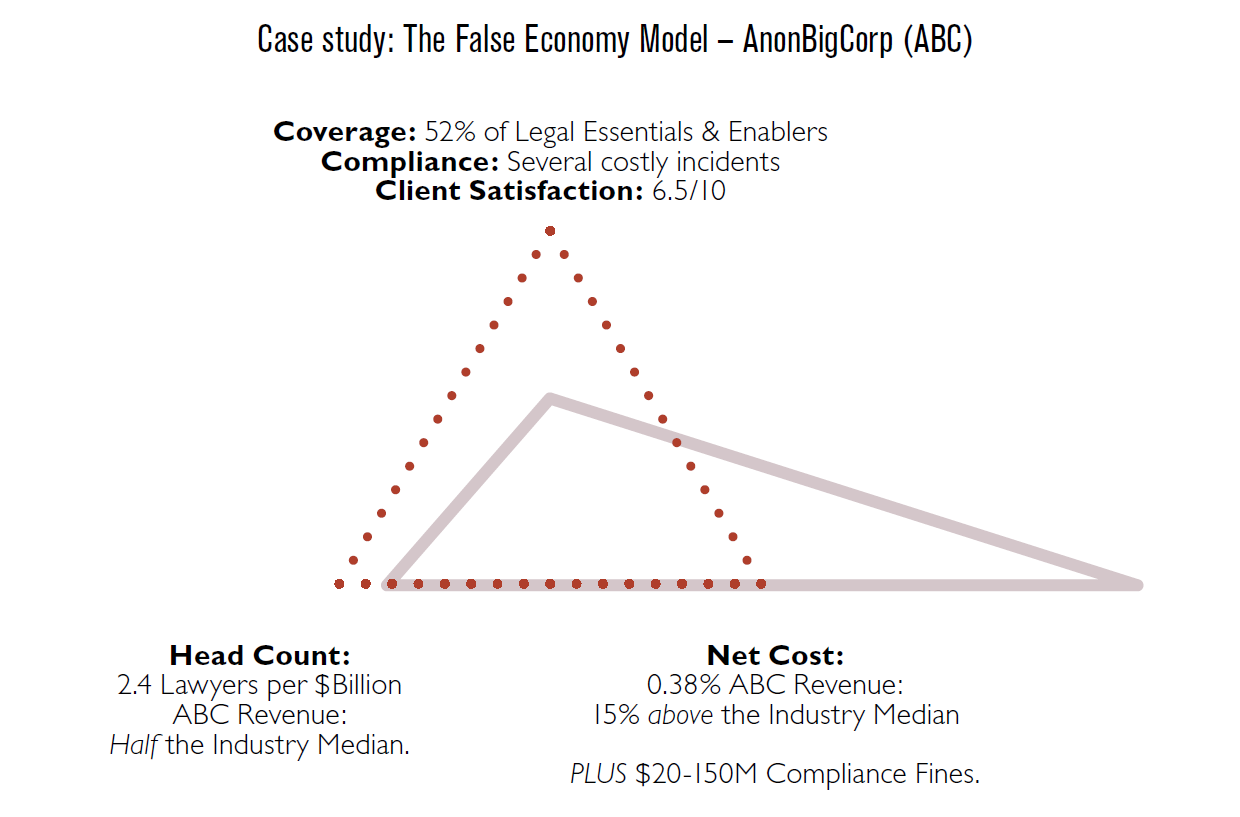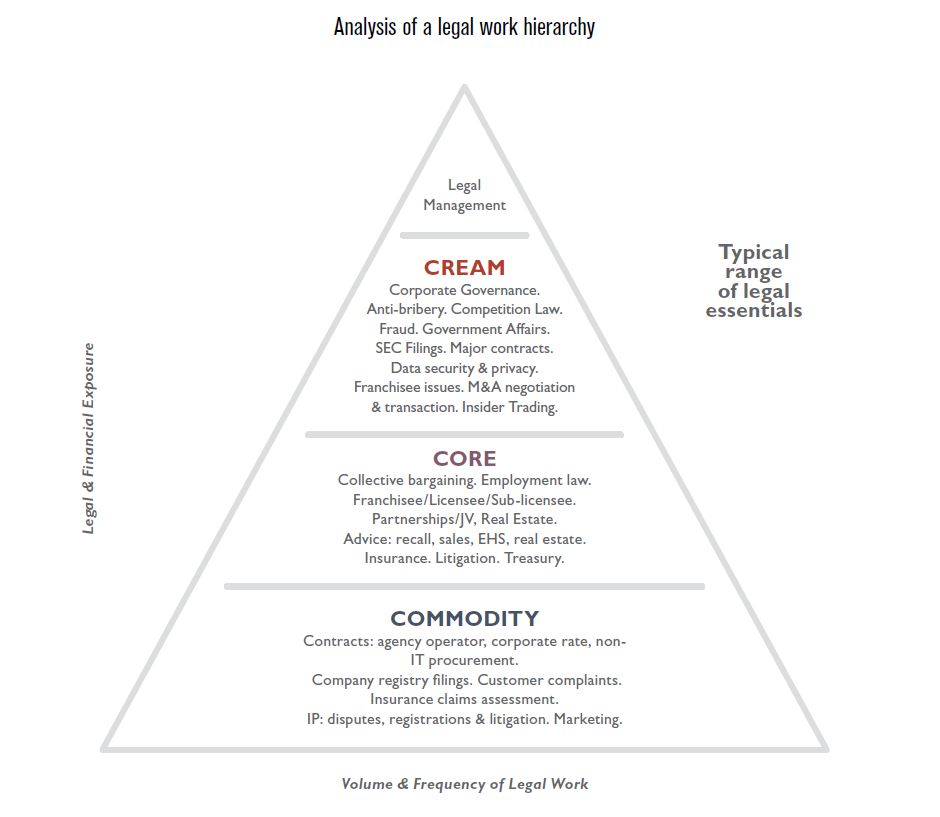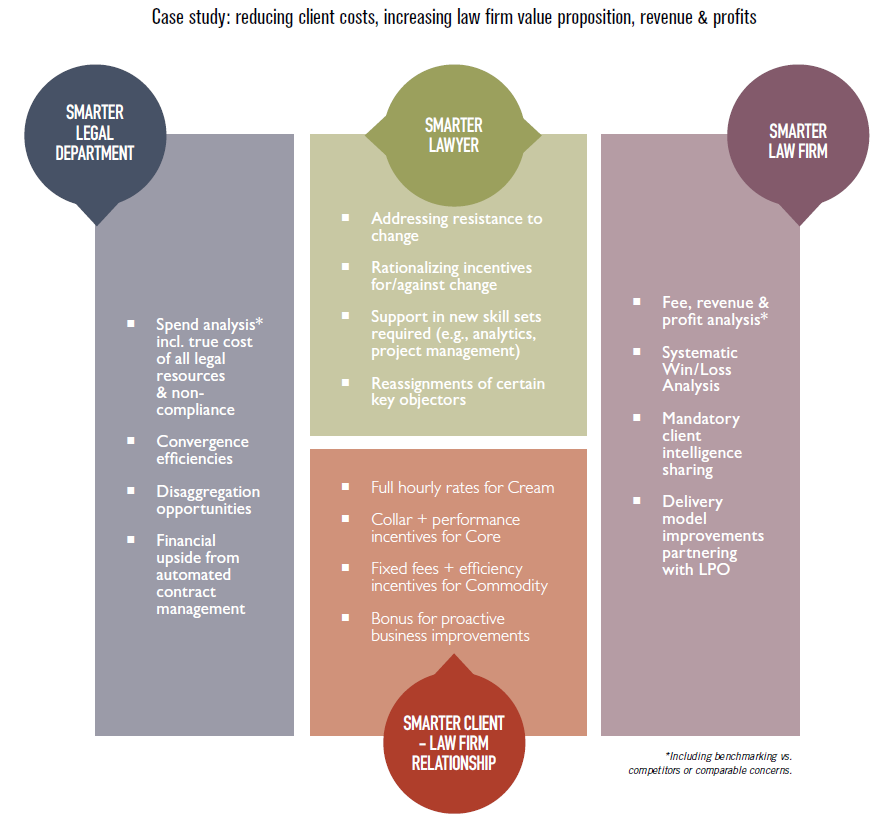Smarter Law is a helpful how-to of legal service improvement.
Trevor Faure’s Smarter Law: Transforming Busy Lawyers into Business Leaders is a welcome addition to the literature of the legal field. A combination of methodology, case studies, and practical guidance, Smarter Law is a helpful how-to of legal service improvement.
Former general counsel and leader of legal services at EY Global, Faure now advises professionals from law firms, legal departments, and legal support services on business and law department management. Smarter Law is an amalgamation of over 200 Smarter Law case studies on maximizing business and legal potential — on organizational, departmental, and personal levels.
Building on the innovative techniques introduced in Faure’s first publication on the Smarter Law Model, Smarter Law: Transforming Busy Lawyers into Business Leaders employs soft skills and hard data to help readers expand their skill sets, improve legal performance, and enhance client-law firm relationships. Drawing from behavioral economics and emotional and artificial intelligence concepts, Smarter Law provides proven methods to improve legal services.
Smarter Law is composed of four interlocking sections: Smarter Lawyer, Smarter Legal Department, Smarter Law Firm, and Smarter Client — Law Firm Relationship. Flowing from one chapter to another, the book shows how lawyers who improve their personal performance also create better legal department or law firm results, which often leads to a more productive law firm-client relationship. Filled with guidance and concrete examples, the chapters incorporate easy-to-read visual aids. My favorites are the triangles, but more on that later.

The Smarter Lawyer section discusses “The Magnificent Seven” ways a lawyer can become an indispensable business partner and trusted adviser, as well as the “The Maleficent Seven” behavioral resistances to essential change (and how to overcome them). Faure suggests improvements to personal performance that can help smarter lawyers gain the advantage when negotiating deals. However, the section’s emphasis on professional performance does not neglect personal satisfaction. Given that the legal profession has some of the highest rates of depression, Faure reminds readers that “Lawyers are Humans Too,” and dedicates a chapter to emotional intelligence. This chapter combines neuro-linguistic programming tools such as deep personality components, beliefs, and frames of mind to equip lawyers with a consciousness of themselves and those around them, leading to greater satisfaction and success.

As the leader of ACC’s Legal Management Services function, my work focuses on helping corporate legal departments become more effective and efficient. Therefore, I was naturally drawn to the Smarter Legal Department section. In chapter six on “Demystifying Performance Improvement Techniques and Modelling Your Legal Function,” Faure efficiently explains Lean Six Sigma, Agile, and Design Thinking — methodologies borrowed from manufacturing and product development that legal departments are applying to improve delivery of legal services. This chapter illustrates the analysis Faure led for Avis Budget Group — a 2017 ACC Value Champion — and many other clients (he has drawn from 200 real-life transformations case studies in the book). The key factors to consider are:
- Coverage: the extent to which the legal function provides the essential and enabling work its clients need;
- Compliance: measured by the number of incidents;
- Client satisfaction with the legal function;
- Net costs: including legal fees, fines, and business losses — benchmarked against peer companies; and
- Headcount: also benchmarked against peer companies, as lawyers per one billion dollars in revenue.

Now it’s triangle time. This sort of analysis makes the return on investment calculation for legal resources clear. In addition to the “False Economy” model presented here, where a company seeking to save money underspends on legal resources, resulting in higher than industry average net costs, Faure proposes other typical — and real — paradigms, such as:
- Mission Creep Model: where essentially the legal department was over-delivering, which resulted in staff burnout and turnover;
- Heavily Staffed, In-source Model: where labor arbitrage resulted in complete legal coverage and few compliance incidents, but the department was resented by the business for “over-lawyering,” excessively restraining business performance; and
- Inefficient Resources Model: where headcount was in line with industry peers but deployed inappropriately so numerous compliance incidents occurred and net costs were high.
Faure explains the transformation steps to adopt the Smarter Law approach undertaken by Avis and other clients. Bryon Koepke, senior vice president, chief securities counsel, and assistant corporate secretary at Avis, noted to me in an interview that the misalignment of coverage became very clear when he and General Counsel Michael Tucker were presented with global “heat maps” showing where Avis had too many, too few, or just about the right number of lawyers relative to the amount of revenue generated in that country or through that part of the business.
A helpful tool explained in Smarter Law is to create a hierarchy of legal work value derived from the stakeholders. Avis applied this hierarchy to the work assigned to its law firms. They set Global Target Rates for each panel firm, incentivizing each firm to leverage its use of partner/associate/legal process outsourcer time, as well as technology, to provide cost effective and efficient legal services, while at the same time helping to manage its own profit margins. Rates are customized for each panel firm, and alternative fee arrangements are also applied in the Core and especially in the Commodity tiers of the hierarchy.
I have always wondered if this rate-setting process is too cumbersome, so I pressed Koepke on that. He acknowledged that it was a challenge to come up with the good benchmarks and that some of the law firms had a difficulty digesting the methodology. Ultimately, he says “they got there” (better to have only seven firms than seventy!). Challenges notwithstanding, Koepke pointed out an important benefit of applying the Smarter Law Model to law firm pricing: “You don’t have to be a passive participant, catching what the law firm throws you. You can take control of rate, product, service and staffing — every aspect of the relationship.”In the Smarter Law Firm section, Faure breaks down what is wrong (and right) with the way law firms are functioning. The chapters range from techniques that grew the Big Four professional services firms over US$30 billion in revenue, technology solutions with the highest return on investment, and ways to modernize law firm business development to provide clients with what they really want.
The Smarter Law Firm — Client Relationship section of the book generously supplies examples and templates to apply the “Win-Win-Win” RFP process, referring to:
- Client finance/procurement efficiencies;
- Legal service quality; and
- Law firm profits.
This chapter breaks down prequalification, elimination, full proposals, negotiation, and selection. Faure includes sample legal scenarios one could use to test each law firm’s expertise and effectiveness, while also providing an equal set of circumstances for comparison across law firms. He also supplies a sample “elimination tree” and a template set of RFP criteria and weighting. The following chapter rounds out the final section by explaining and showing, in detail, how to apply the Smarter law pricing model to the three tiers of legal work (Cream, Core, and Commodity) as well as how to benchmark law firm performance.
Going back to my interview with Avis, Koepke confirmed that their application of Faure’s Smarter Law model is holding up three years later. Avis’s provision of services to the business clients is well aligned to corporate strategy and priorities, and their radical outside counsel convergence, along with conversion to new pricing models, is persisting. Avis’s approach to pricing is evolving, but all of the law firms are renewing, so the stated goal of achieving a “win-win-win” in the Smarter Law Firm — Client Relationship section has been met.
Looking at a real world success of implementing the Smarter Law Model that has direct ties to ACC — Avis reduced cost by 30 percent after enlisting Trevor Faure to conduct an independent assessment — Faure’s case has been made and proven. There’s much in this ambitious handbook, Smarter Law, that can help improve cost control and law firms’ value, as well as turn lawyers into successful business leaders.




